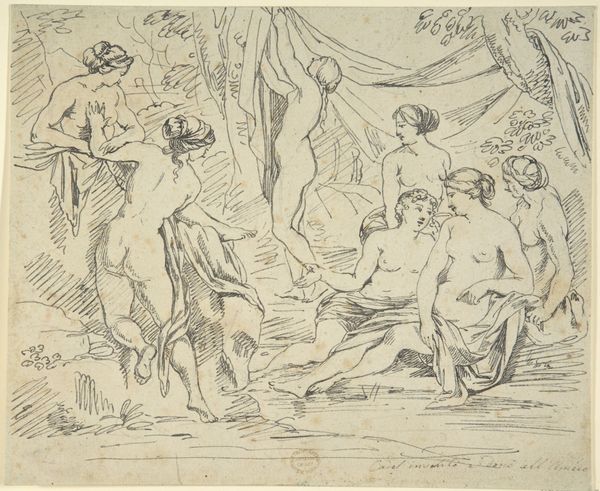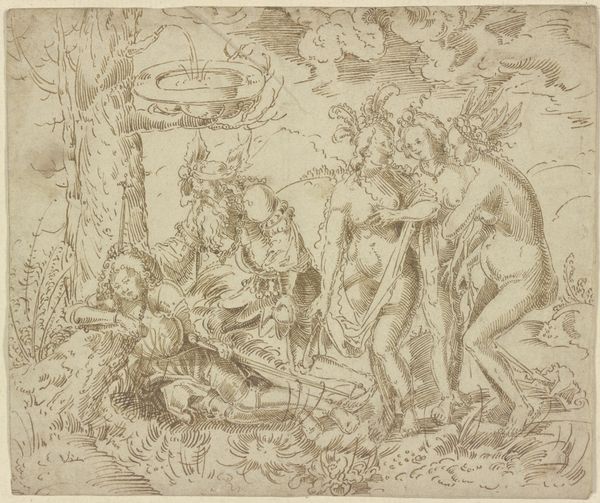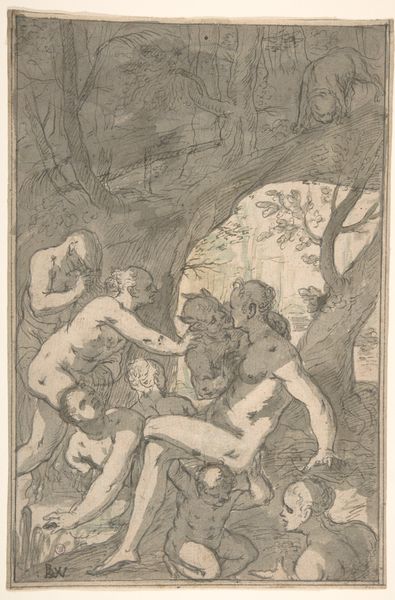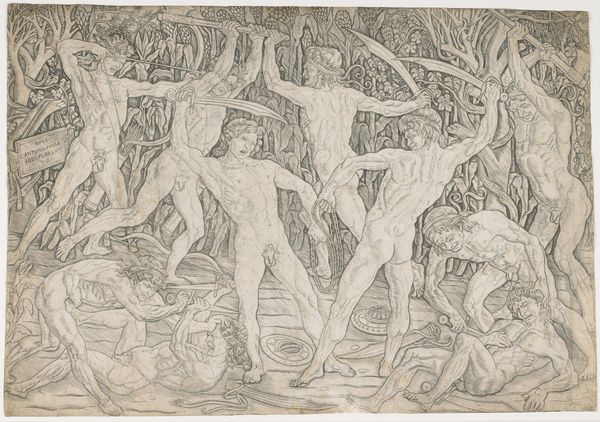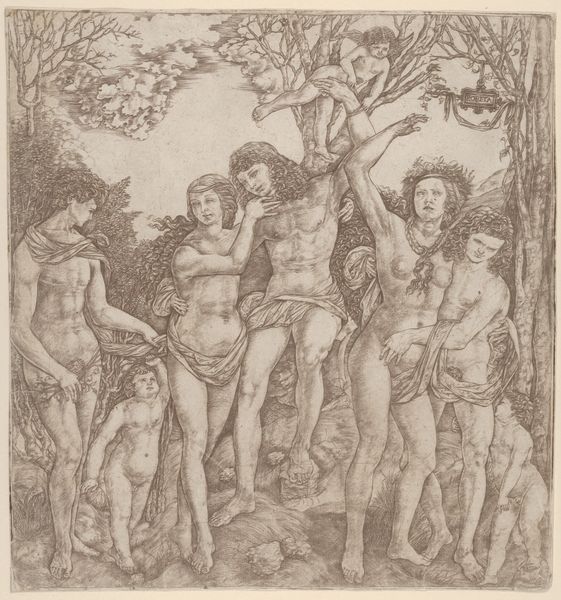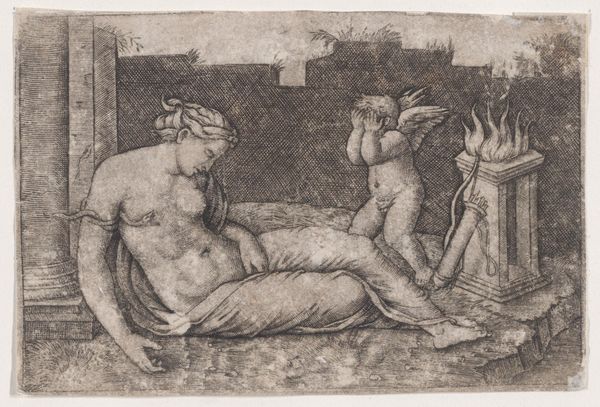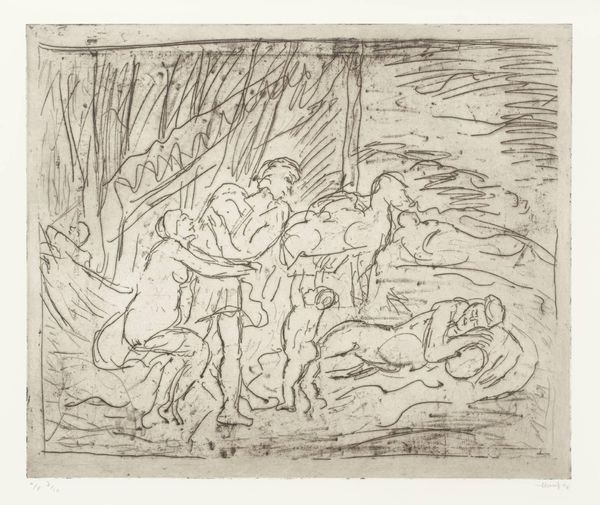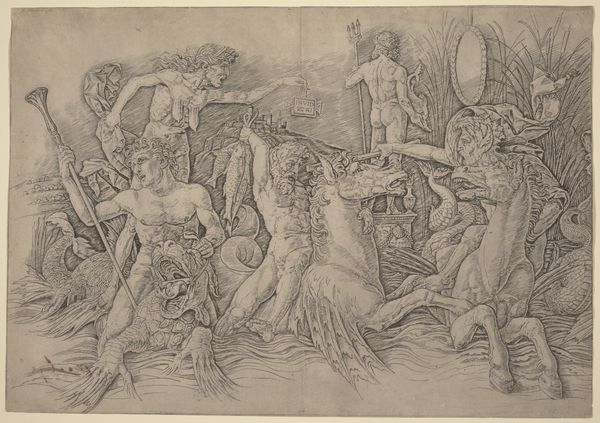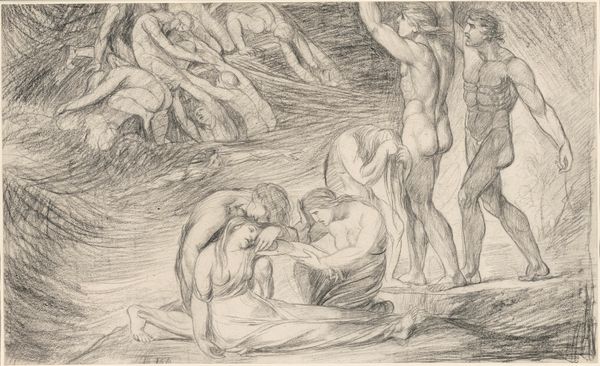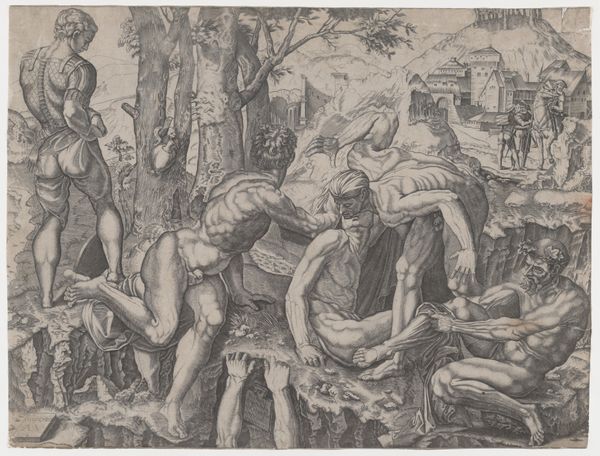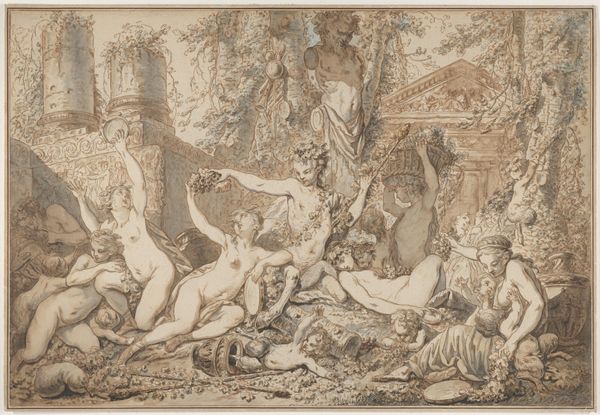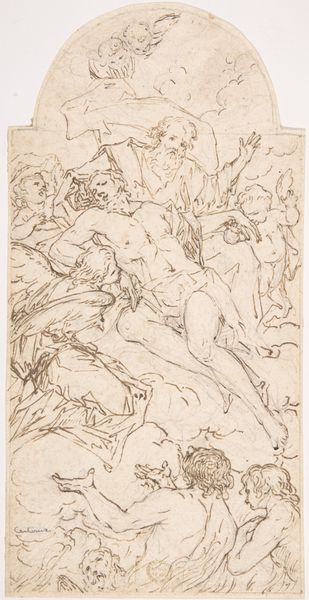
Battle of the Sea-Gods (right portion of frieze) 1480 - 1490
0:00
0:00
drawing, print, etching, ink
#
drawing
#
ink drawing
#
narrative-art
# print
#
etching
#
figuration
#
11_renaissance
#
female-nude
#
ink
#
pencil drawing
#
history-painting
#
italian-renaissance
#
male-nude
Dimensions: Sheet (Trimmed): 11 5/8 × 15 1/2 in. (29.5 × 39.4 cm)
Copyright: Public Domain
Andrea Mantegna made this engraving called "Battle of the Sea-Gods" in Italy sometime in the late 15th century. It shows a chaotic scene from classical mythology that would have resonated with his educated, elite audience. Mantegna was deeply interested in ancient Roman art and culture, which was a hallmark of the Renaissance in Italy. You can see this influence in the muscular figures and dramatic composition. But it's not just a straightforward revival. The printmaking medium itself, relatively new at the time, allowed for wider distribution of images and ideas. This meant that Mantegna's vision of classical antiquity could reach a larger audience. The composition may be inspired by ancient Roman sarcophagi reliefs which also depicted chaotic battle scenes, and the artist may be making a statement about civic unrest during this period. To truly understand Mantegna's work, we need to consider the social and intellectual context in which it was made. What did the Renaissance mean for the role of the artist in society? How did the rise of printmaking change the way art was consumed and understood? These are the questions that help us unlock the deeper meaning of this image. We must research its relation to contemporary Italian and European social, political, and religious trends.
Comments
No comments
Be the first to comment and join the conversation on the ultimate creative platform.
